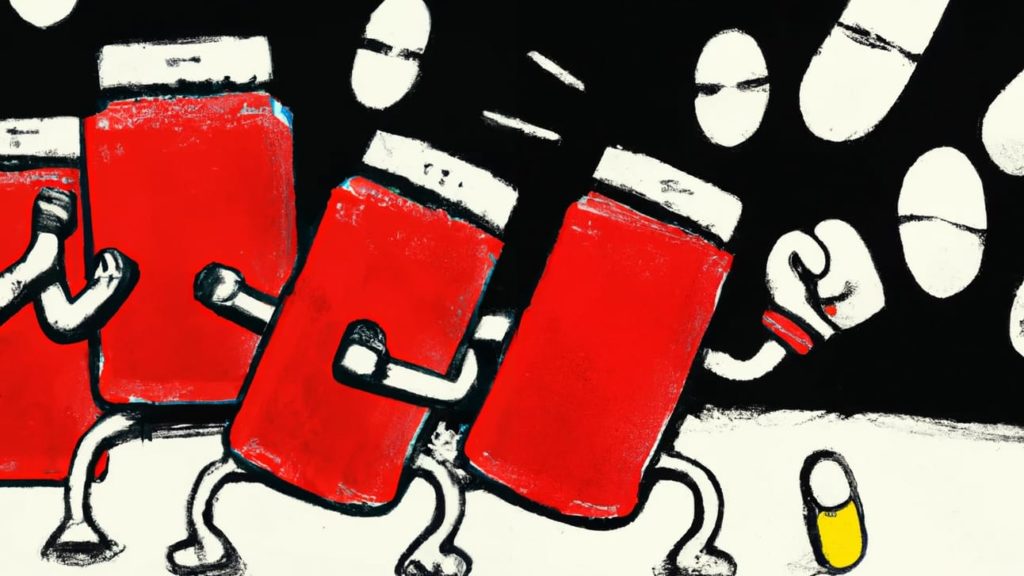The first round is in the books, and we got one clear knockout, one big “upset,” and some clear trends on how you all thought about the environment in 2023. If you want to skip ahead to the voting for today, here’s the link.
Here’s how yesterday went down:
In the Price Control Regional: The “selection of the first 10 medicines for Medicare price controls” (88.5%) SOUNDLY DEFEATED “patient-focused listening sessions.” (11.5%) I figured this one was a gimmie, given how poorly CMS handled the listening sessions.
“IRA lawsuits” (57.7%) SCORED A CLOSE WIN over “state prescription drug affordability boards” (42.3%). But one commenter called PDABs a “tangible threat to industry largely flying under the radar.”
In the Regulatory Regional: The “growth of 340B” (57.7%) CLAIMED A BIG UPSET over “march-in rights” (42.3%). Looks like the selection committed seeded 340B way too low. Either way, that strong showing should make for an interesting Elite Eight matchup.
The “FTC’s efforts in Amgen-Horizon” (60%) GUTTED OUT THE W against “FTC intervention in the Sanofi-Maze deal.” (40%). I thought this one had upset potential because the FTC’s reasoning in Sanofi-Maze seemed more insidious. But the higher-profile battle prevailed.
In the Launch Regional: Leqembi’s launch (63%) BEAT OUT Brenzavvy’s launch (37%) by a two-to-one margin. I had feared an even larger blowout, but I was pulling for the underdog here. The Brenzavvy story really is unparalleled in modern drug launches.
The closest contest was the “Zepbound pricing approach” (54.2%) SNEAKING BY “sickle cell pricing” (45.8%) in a battle of 2/3 seeds. This was the toughest call in the first round, given how important — but how different — those two launches are.
In the PBM Regional: “House action on PBMs” (69.2%) was A RUNAWAY WINNER against “Senate action on PBMs” (30.8%). I think the House bill is weak sauce, especially compared with some of the Senate Finance Committee proposals, but the House passed their bill, and the Senate didn’t, hence the blowout.
And “Blue Shield of California PBM gambit” (65.4%) PICKED UP THE DUB against “Mark Cuban’s anti-PBM screeds.” (34.6%) That said, I’d be willing to bet Mark Cuban will do more to unwind PBMs in the next five years than Blue Cross will.
Today’s matchups are below. VOTE FOR YOUR CHOICES HERE:
(1) The selection of the first 10 medicines for Medicare price controls
(2) Lawsuits seeking to toss the IRA
(4) The growth of the 340B program to record size
(2) The FTC’s intervention in the Amgen-Horizon deal
(1) Leqembi’s launch in Alzheimer’s, along with its four-page pricing explanation
(2) Zepbound hitting the market at a discount to Wegovy
(1) House passes the Lower Price, More Transparency Act
(2) Blue Shield of California drops its PBM for a home-grown solution
The government filed its final brief in the BMS/JNJ IRA cases. I haven’t seen any coverage. This is the second suit where briefings are done, and now we’re just waiting for oral arguments and a decision. (Merck is the other.) The calendar from here on in becomes very interesting.
I’m trying to be quick with the news this week, but this new opinion in the battle over copay accumulators is worth the read. (As a reminder, a judge rolled back a Trump-era rule enabling copay accumulators; the Biden administration appealed.) In it, the judge makes clear that — yeah — the government needs to return the rule to its old, pre-accumulator status. The HIV+Hepatitis Policy Institute release on the newest developments provides a good explainer.
This Boston Globe op-ed on the inability of the American health care system to repurpose old drugs for new uses is probably paywalled. But it’s an excuse for me to make a basic point here: we should celebrate drugs going generic. It’s a basic part of the social construct of the drug industry. But we should also be clear-eyed about what the trade-off is: there is no more incentive to continue to experiment rigorously. The less time a medicine is on the market with exclusivity (or protection from price control), the less opportunity there is for innovation. I know this is an insultingly basic point to make, but it feels like these kinds of tradeoffs are ignored.If this email was forwarded to you, and you’d like to become a reader, click here to see back issues of Cost Curve and subscribe to the newsletter.





